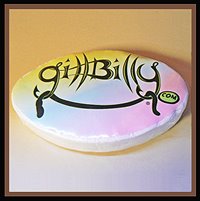 Tijuana is often referred to as the world's most visited border town. Tijuana based Mexicoach, which has provided cross-border bus service for years, is hoping a new endeavor will stimulate a new awareness of this bustling border town beset with a series of bad press reports during this past year. They have launched an effort this past month to show more tourists the attractions of the city of Tijuana. Labeled Tijuana City Tour, three buses have now been converted to showcase Tijuana’s Teniente Guerrero Park, the Agua Caliente Tower, a winery, a brewery and the Rio Zone's restaurant row. The 15-mile city tour starts and ends in the Rio Zone at the Tijuana Cultural Center, or Cecut, but riders can hop on and off at any of the 13 stops, riding all day after paying the $10 adult fare.
Tijuana is often referred to as the world's most visited border town. Tijuana based Mexicoach, which has provided cross-border bus service for years, is hoping a new endeavor will stimulate a new awareness of this bustling border town beset with a series of bad press reports during this past year. They have launched an effort this past month to show more tourists the attractions of the city of Tijuana. Labeled Tijuana City Tour, three buses have now been converted to showcase Tijuana’s Teniente Guerrero Park, the Agua Caliente Tower, a winery, a brewery and the Rio Zone's restaurant row. The 15-mile city tour starts and ends in the Rio Zone at the Tijuana Cultural Center, or Cecut, but riders can hop on and off at any of the 13 stops, riding all day after paying the $10 adult fare.The newly commissioned bright-red buses have been designed to give the passenger an unobstructed view of the city. The top of each bus has open air seating giving the rider a constant buena vista of the tour’s route. “A lot of people don't know the city, think that Tijuana is just Avenida Revolucion, but the truth is that there are historic buildings everywhere and lots of stories to tell,” said Jorge Luis Sánchez, tourism director for Grupo Empresarial Mar de Cortez. There is a great deal of scenery indeed, aside from the jumble of Avenida Revolucion stores most associated with the Tijuana experience. The city is a duty-free zone, and it is truly a shopping paradise, with an impressive and astounding variety of merchandise; ranging from leather goods, silver jewelry, designer clothing, tile, ceramics, blown glass, glazed pottery, woven blankets, embroidered dresses, onyx chess sets, Mexican liquors and much more.
Bilingual guides usually accompany the tour, their narration researched through the Tijuana Historical Society. The bus is a chance for tourists to see and experience the side streets that they would never see unless they were brave enough to poke into these obscure and interesting areas by means of their own car. On the bus the rider does not have to worry about speaking Spanish for directions and getting lost while navigating through unfamiliar parts of the city.
New passport laws, reported drug cartel violence, and increasingly slow border crossings have contributed to this economic downturn. Tijuana's Convention and Visitors Committee reports that overall tourism in Tijuana has dropped dramatically since 2005 – from about 25 million visitors annually to nearly 15 million. According to reports, sales on the traditional tourist strip have fallen 80 percent since 2001. Even the painted donkey trade is in danger of being shut down. These props known as a "Mexican Zebras" on Avenida Revolucion are threatened by the recent violence in the streets and the resultant effect on the cities economy. Tijuana's painted burros have been a fixture on the streets of this border city for decades, posing with Hollywood stars and casual tourists alike for the perfect souvenir photo, but the owners of the Mexican Zebras say they fear their trade may become the next casualty of spiraling drug violence. These street photographers still offer a unique yet expensive ($20) memento for today's visitors. The cameras in use today are nearly as old as the profession itself.
Although reports of police extortions have gone down, and an increase in police protection has been provided, as of yet the tourists are not coming back in the numbers experienced in past decades. The expectation is that the new bus tour line will not only attract the day tripper from north of the border but also guests visiting Tijuana from other parts of Mexico. It is hoped more visitors will be attracted to Tijuana, a city of more than 1.4 million people, for not only its many shops and restaurants, but also for a greater appreciation of its cultural history.
When: Every hour. The first trip starts at 10 a.m. from the Tijuana Cultural Center and the last one ends at 8 p.m.
Where: Trip starts at the cultural center, but riders can board at any of 13 stops on the route, such as along Avenida Revolucion and near the border at the Viva Tijuana shopping center.
Fare: Adults pay $10; seniors older than 60 and children younger than 12 pay $5. One child accompanied by an adult may ride free.
Men and fish are alike. They both get into trouble when they open their mouths.
Author Unknown
Where: Trip starts at the cultural center, but riders can board at any of 13 stops on the route, such as along Avenida Revolucion and near the border at the Viva Tijuana shopping center.
Fare: Adults pay $10; seniors older than 60 and children younger than 12 pay $5. One child accompanied by an adult may ride free.
Men and fish are alike. They both get into trouble when they open their mouths.
Author Unknown


No comments:
Post a Comment